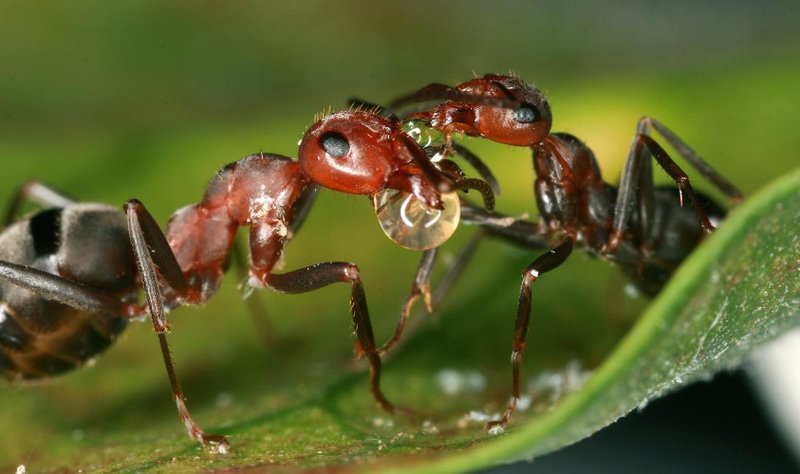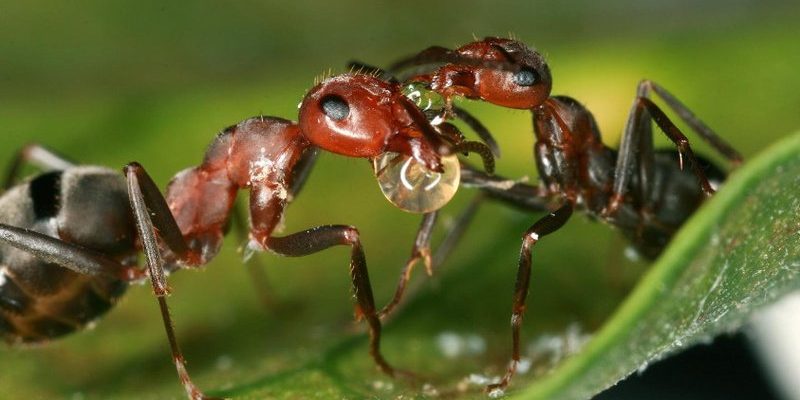
Ants have been the subjects of various studies, with researchers exploring everything from their communication skills to their social structures. You could say they’re like tiny superheroes of the insect world, each playing a crucial role in their ecosystems. Let’s dive deeper into how scientists have approached the study of ants and the incredible findings that have come from these investigations.
The Social Structure of Ant Colonies
One of the most intriguing aspects of ants is their social structure. Ant colonies often resemble complex societies with different roles for each member. There’s usually a queen, workers, and soldiers. The queen is the heart of the colony, laying thousands of eggs, while worker ants carry out various tasks like foraging for food, taking care of the young, and defending the nest.
Scientists have studied how these roles evolve and change based on the needs of the colony. For example, when food is scarce, worker ants may take on different duties, showcasing their flexibility. Many researchers use direct observations or sophisticated technology to gather data on how these roles function together, almost like a team working towards a common goal.
Understanding this social structure isn’t just interesting; it can also provide valuable insights into human societal organization. Think about it: if ants can work together so efficiently, what can we learn about teamwork? This aspect of ant behavior has inspired fields ranging from sociology to robotics.
Communication Among Ants
Ants communicate in fascinating ways. They don’t have vocal cords like we do, but they use chemical signals called pheromones to send messages. When a worker ant finds food, it leaves a scent trail for others to follow. Imagine a breadcrumb trail leading to a hidden treasure—that’s essentially what they’re doing!
Scientists have conducted extensive studies on these pheromones to understand how ants communicate. They’ve found that different scents can convey various meanings, from warning others of danger to signaling that food is nearby. This chemical communication is so efficient that a whole colony can react swiftly to changes in their environment.
Research into ant communication has broader implications, too. It can inform our understanding of complex systems and even artificial intelligence. By mimicking how ants communicate, scientists hope to develop more efficient algorithms in technology. Who knew tiny ants could inspire big ideas?
Ants as Ecological Indicators
Ants play a crucial role in many ecosystems, making them important ecological indicators. Their presence can indicate the health of their environment. For example, a decline in ant populations may signal changes in habitat quality or the impact of pesticides. Scientists have begun using ants as bioindicators, which essentially allows them to monitor ecosystem health.
Field studies often involve comparing ant populations across different environments. Researchers look at species diversity, colony size, and overall population densities. This information helps paint a picture of how various factors, like climate change or human activity, are affecting local ecosystems.
By studying ants, scientists can make informed decisions about conservation efforts. Protecting ant populations may lead to healthier ecosystems, which ultimately benefits all living creatures, including us!
Ant Behavior and foraging Strategies
Have you ever watched ants scurrying around in search of food? Their foraging strategies are impressive. They often work together to locate and transport food back to their colony. Scientists have studied these foraging behaviors to understand how ants make decisions collectively.
One common method used in research is the “foraging trail experiment.” Scientists place food at various distances from the nest and observe how ants decide which route to take. They’ve found that ants can adapt their strategies based on environmental conditions, much like we adjust our routes when driving depending on traffic.
These studies reveal something deeper about decision-making processes, not just in ants but in larger ecosystems. Understanding how ants manage resources can help us think critically about how we utilize our own resources.
The Role of Ants in Soil Health
Ants also contribute significantly to soil health. They aerate the soil, helping it absorb water and nutrients. Their nest-building activities create tunnels that improve water drainage and root penetration. Scientists explore this relationship by studying the impact of ant populations on soil conditions, plant growth, and even agriculture.
Research often involves comparing areas with high ant activity to those without. Findings show that areas inhabited by ants tend to have richer soil and healthier plants. In agricultural settings, this information is essential for sustainable farming practices. By promoting ant populations, farmers can enhance natural soil fertility, leading to better crops.
This connection between ants and soil health highlights how interconnected species are within ecosystems. Protecting ants could lead to more sustainable practices in agriculture, which is something everyone can appreciate.
Ants in the Lab: Controlled Experiments
Scientists often take their studies into the lab to conduct controlled experiments. This allows them to isolate specific variables and understand how ants respond under different conditions. For instance, researchers might study how ants react to different levels of food availability, temperature, or even light.
Controlled experiments help clarify behaviors observed in the wild. When scientists change one factor at a time, they can see direct effects. This kind of research is important for drawing general conclusions about ant behavior that can be applied across various species and environments.
The beauty of lab studies lies in their precision. Scientists can replicate conditions to ensure that their findings are reliable. This methodical approach has led to many breakthroughs in our understanding of ants and their behavior.
The Future of Ant Research
As technology advances, so does the potential for ant research. New tools, like drone technology and AI-powered analytics, are making it easier for scientists to study ants in their natural habitats without disturbing them. This could lead to even richer insights into ant colonies and their complex interactions.
The future of ant research is promising. As we face challenges like climate change and habitat loss, understanding how ants adapt can guide conservation efforts. The more we learn about these tiny creatures, the better equipped we are to protect them and, by extension, our ecosystems.
In conclusion, the study of ants reveals a world of complexity and interconnection. Whether it’s their social structures, communication skills, or ecological roles, there’s so much we can learn from these small but mighty insects. As we continue to unravel the mysteries of the ant world, we uncover lessons that might just help us navigate our own complexities as humans. Who knew that these little critters could teach us so much?

